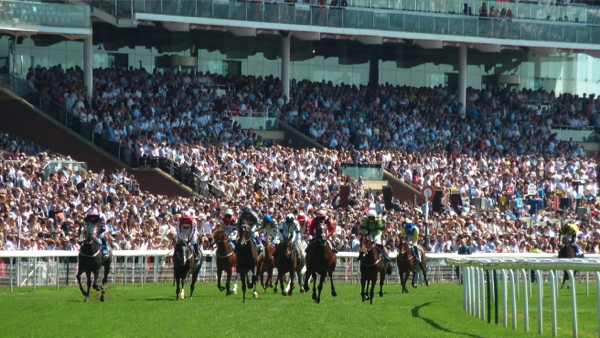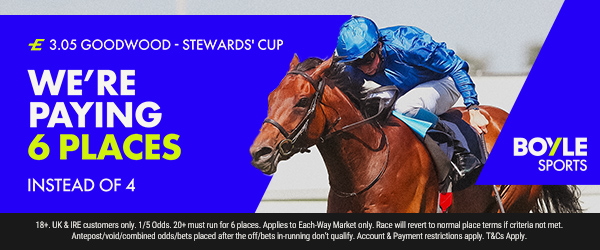 |
RacingBetter News |
| Thursday 17th April 2025 | |
The Role of Horse Racing Broadcasts in Modern UK Casino Strategy

Source: Canva editor
Horse racing is an integral part of British culture, and no modulus British social event occurs without sporting frenzy and an opportunity to wager on intriguing odds. Recently, however, the horse racing broadcasting relations have changed symbiotically with the casino industry and with great benefits to both. This very shift indicates the changes in relationship operating gambling companies have adopted to compete for customer attention and loyalty amidst deteriorating market conditions.
The Convergence of Tradition and Technology
In modern British casino, a gap awaits in terms of willing to broadcast horse races. Casino operators in the United Kingdom have placed new investments into HD televisions, specialized viewing zones, and race audio systems allowing for greater patron immersion. This means guests can bask in the excitement of the races without leaving the gaming floor. Horse racing also offers new betting opportunities. The exhilarating pace of horse racing aligns astonishingly well with the traditional social environment unique to casinos.
This technological advancement, together with the legalization of gambling, racing broadcasting, and pari-mutuel wagering on races within gaming establishments, pose as a complementary marketing draw and serve as a peripheral entertainment option that patrons may stay interested in while they are at the casino. The timing of major racing promotional scheduling in conjunction with casino marketing has long been adopted by most casinos as a standard for cut throught industry operators who want to increase floor traffic and, ideally, the average length of stay within the casino.
Broadcast Rights and Revenue Streams
The funding models of racing broadcasts within the context of a casino have become more complex over time. For example, Premium Horse Racing has a significant value in the secondary market which attracts a certain segment of consumers within the casino hoping to place bets on races, thus generating some revenues on race-related betting activities.For larger casinos, these costs not considered merely expenditures but rather projected return on investment investments. Direct revenues still generated from race-related betting activity is naturally the most visible benefit but equally important are the indirect spending habits of patrons who turn up to visit the casino primarily for some scheduled racing events.
Casino operators state that those patrons who use the horse racing monitor tend to spend more time on property and subsequently, their combined expenditure on food, beverages, and even traditional table games increases. Some establishments have responded to this perceived change by developing dedicated race seating areas that serve as transitional zones between sports viewing and gaming entertainment offering patrons to enjoy a broader range of activities during a single trip to the casino.
Data-Driven Audience Development
A new form of approach regarding audience segments features audience analytics as its focal point. To enhance marketing strategies, the casino industry has benefitted greatly from the acquisition of detailed demographic data gleaned from racing broadcast viewership. It is possible for casino operators to identify resort customers and stratify them with a great level of accuracy, building themed promotions for particular racing fans and leading them to the game via the back door.
This strategy works best for young audiences who will attend the races for socializing and not necessarily because they intend to wager at the slot machines. After capturing their attention during big festivals like Cheltenham or Royal Ascot, they will analyze the viewing patterns and design customer journey pathways that will allow them to transform novice gamblers into seasoned gamblers over time rather than immediately.
Regulatory Considerations and Responsible Gaming
The inclusion of racing broadcasts comes with considerable regulatory issues that differ from one UK region to another. The operators are faced with numerous issues such as how racing content relates to advertising, where it is permissible to bet in relation to the broadcast location, and what fall under the umbrella of responsible gambling measures that need to be included. These rules are always changing which requires constant attention from compliance teams.
There is also increasing awareness that race broadcasts offer additional points of contact for responsible gambling communications. The breaks inbetween races can, for example, be used to communicate specific betting options as well as session limits, which may be more effective with some customers who would not respond to such information in other settings.
The Future Landscape
In the future, racing broadcasts will most likely be further integrated with other casino services, according to industry experts. There are already plans for blended live casino and race virtual reality experiences, while there is an increasing possibility for mobile apps to allow patrons to engage with both at the same time even when physically located in one space.
Conclusion
Incorporating horse racing broadcasts into casinos is about much more than placing additional screens at the gaming floors, but rather demonstrates advanced thinking in cross-promotion and customer entertainment that defines the gambling business in the UK today.
The partnership as it stands now is likely to strengthen in the future as both sides of the world adapt to industry shifts, changing consumer demands and regulations, and new standards fostered by technological innovation.







